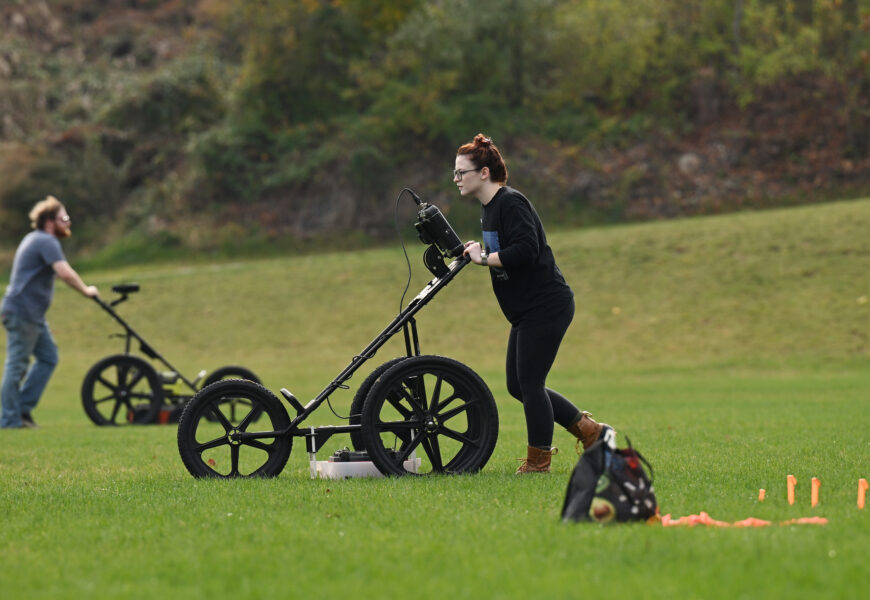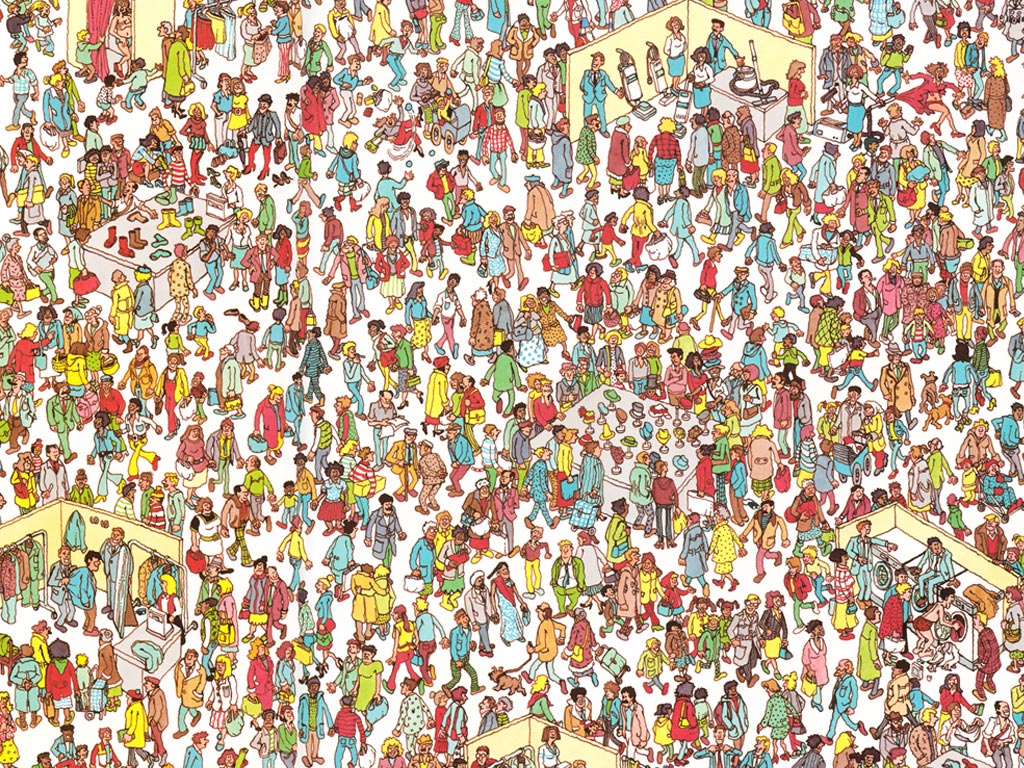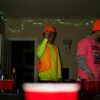Courtesy of Connecticut College Office of Communications
Down at Connecticut College’s lowest athletic field, Archaeologist and Associate Professor of Anthropology Dr. Anthony Graesch is looking to answer the long asked question of whether there are burials underground. “The lower athletic field and waterfront area at Connecticut College is an archeologically more sensitive area of College-stewarded lands. Both Indigenous North American and European settler-colonial ancestors are buried in this area,” explained Dr. Graesch.
The College has been aware of some burials in this area for several decades. Dr. Graesch said, “In 1981, a bulldozer exposed an Indigenous North American burial during construction of the field.” In 2009, a survey was conducted on the Rogers Family Burying Ground (an 18th century cemetery located off to the side of the athletic field) and revealed as many as 41 potential grave sites in the surveyed area, 39 more burials than currently marked by surface monuments.
The State Historical Preservation Office awarded a grant with the mission to “work toward preserving the places that give our nation a cultural identity found in the built environment,” as stated on the website. This was made possible with help from TerraSearch Geophysical, a company that conducts surveys for a wide range of archeological and historic preservation projects. Students from the College have been given the opportunity to participate in this research as well. Students in ANT204: Archaeological Indispensables got the chance to learn about the site and to collect data themselves.
To detect burials, a survey is conducted of the ground using a ground-penetrating radar (GPR) technique, popular in the archeology field. “Geophysical methods are non-invasive in that we do not need to destroy a portion of the archaeological record in order to answer our driving research questions,” explained Dr. Graesch. GPR works by sending pulses to the ground which will create an image. “An instrument sends electromagnetic pulses into the ground, and a receiver interprets the signals bouncing back. Major changes in soil composition, the boundaries between soil and rock, and the presence of large objects return unique signals,” said Dr. Graesch. “We won’t see human remains using this machine but we will use the tell tale signs [of burials present] using archeological features,” said Dr. David Leslie, a team leader representative at TerraSearch Geophysical.
If anything is found during this data collection process, Dr. Graesch hopes it will encourage the formation of conservation protocols at Connecticut College and heritage management plans. Dr. Graesch also assured that the College has no plans to extricate the site if any subsurface anomalies are found. “We have no intention to excavate anywhere on the field, and certainly no intention of excavating any subsurface feature that remotely resembles a burial,” explained Dr. Graesch.
Dr. Graesch mentioned that the College has doubled-down on its commitment to more fully and responsibly steward the cultural resources in the Arboretum in the last year. “This commitment is founded on an intentionally collaborative and consultative approach, whereby all projects that entail the disturbance of surface features and subsurface deposits are first discussed with the College Archaeologist who, in turn, collaborates with the Office of the Arboretum as well as our sovereign neighbors, the Mohegan Tribe, Mashantucket Pequot, and Eastern Pequot, to assess the heritage-related impacts of the proposed project,” explained Dr. Graesh. “I think our Phase 1 archaeological investigation on south campus—where the installation of an expansive solar array is planned—is a good example of this approach in action.” There is history of people here long before Connecticut College was founded, and it is important to preserve, remember, and honor those before us.










